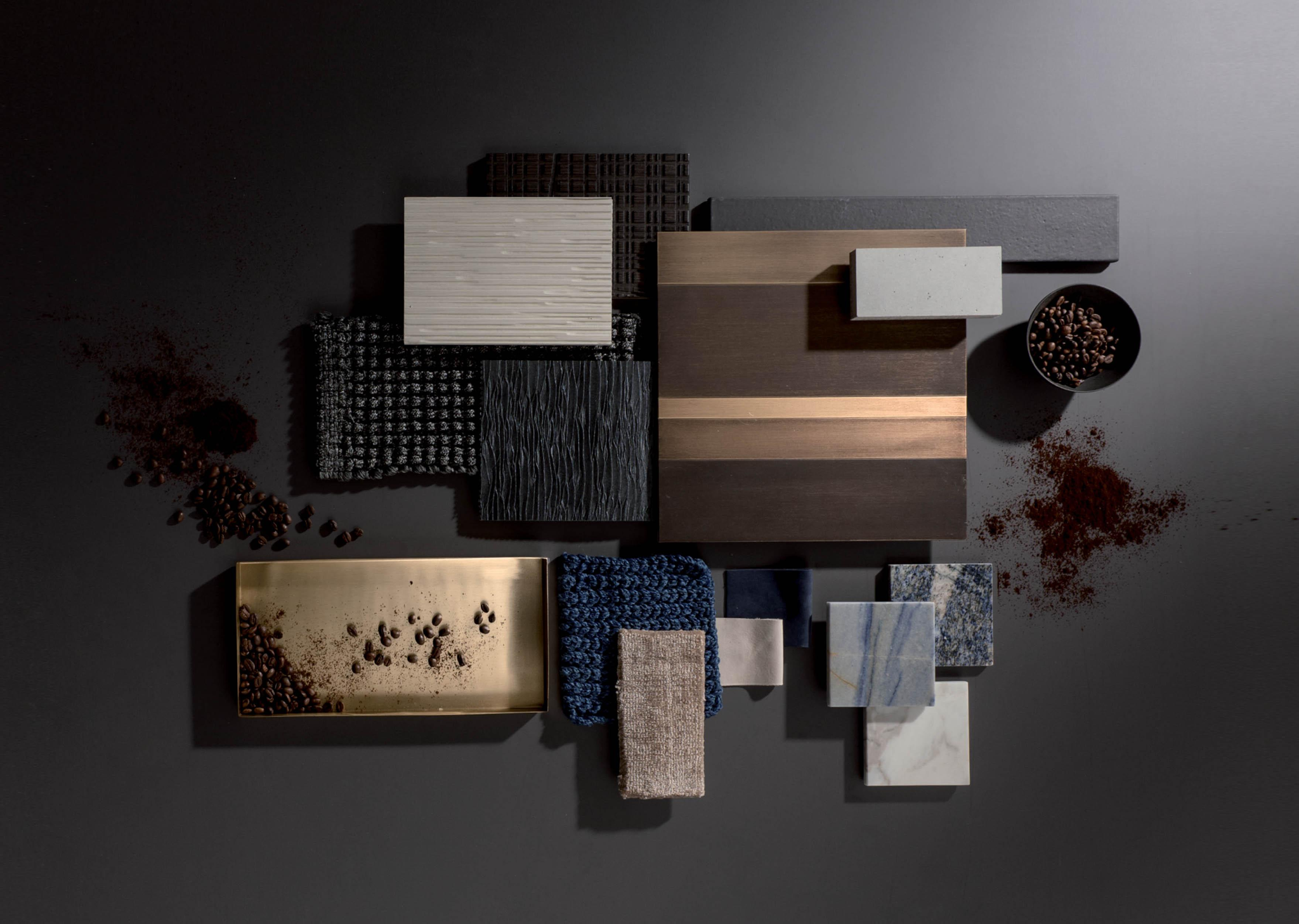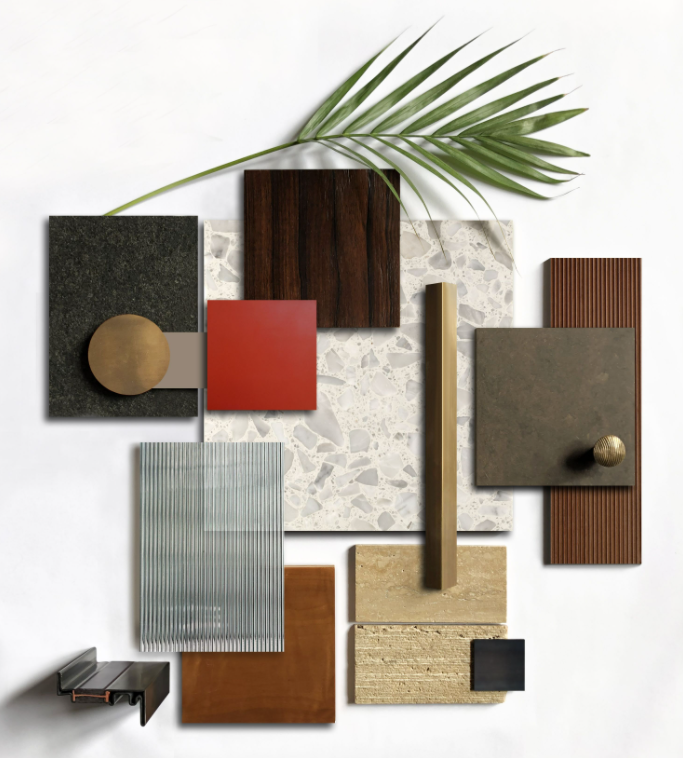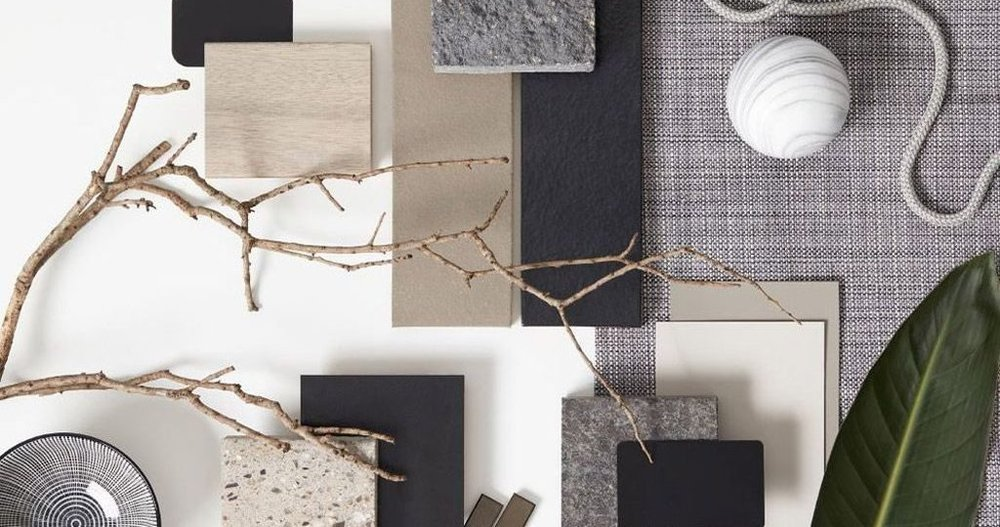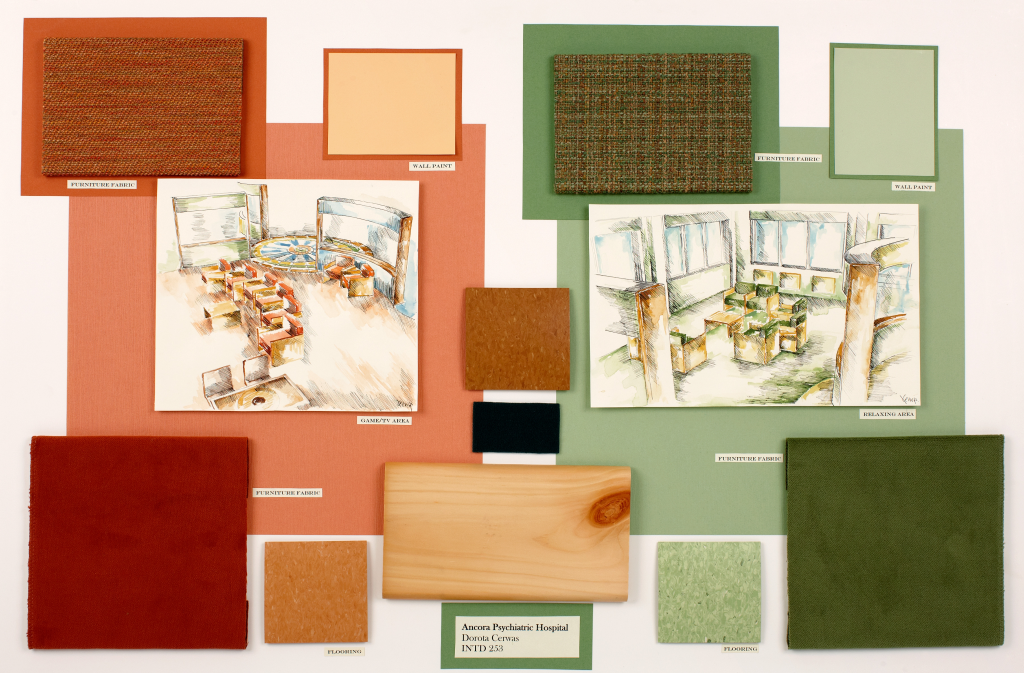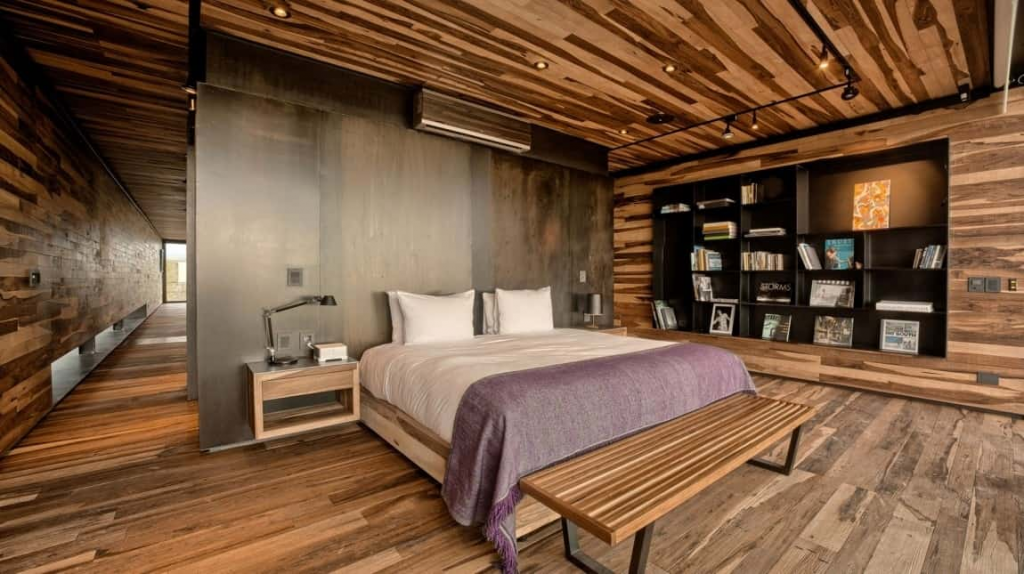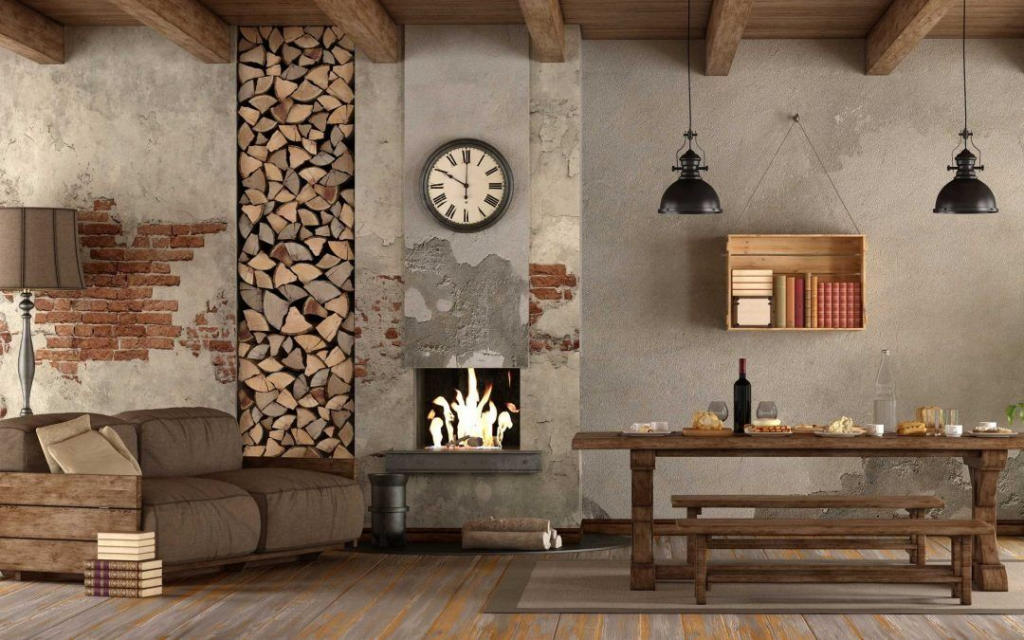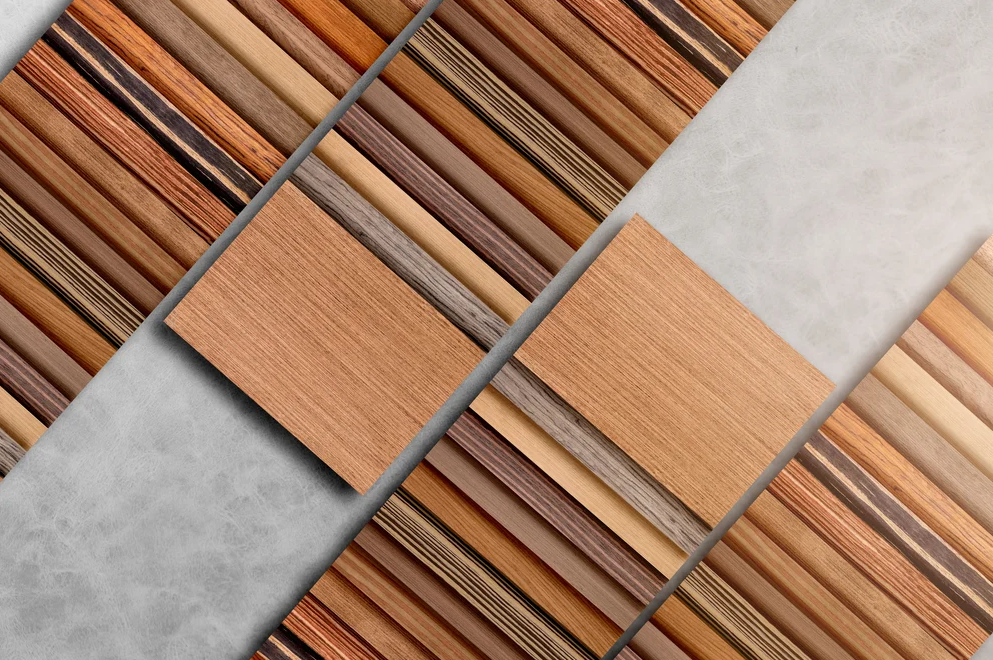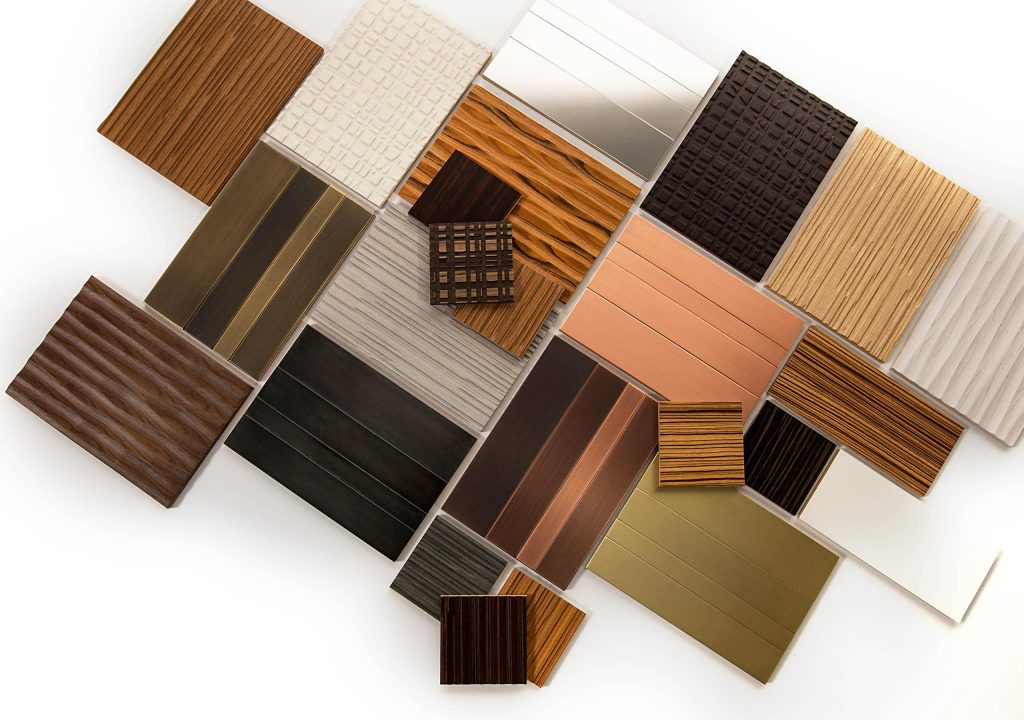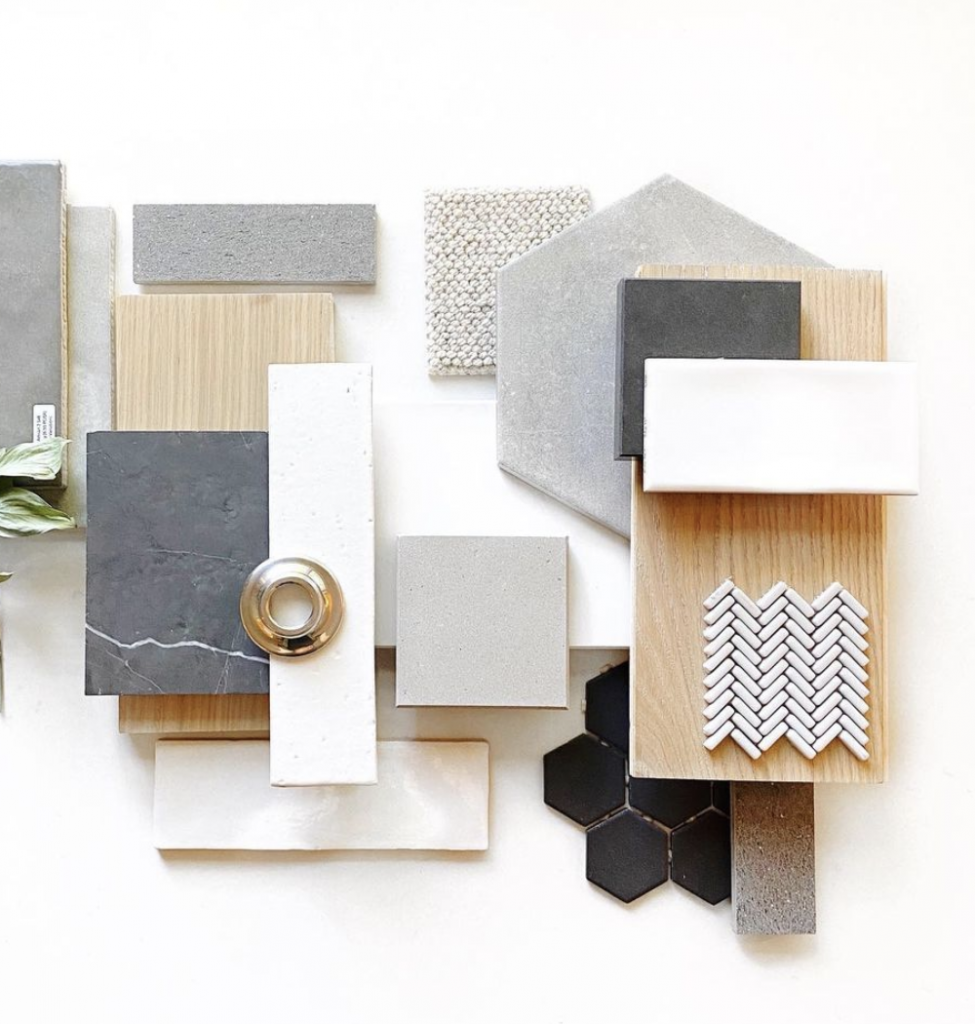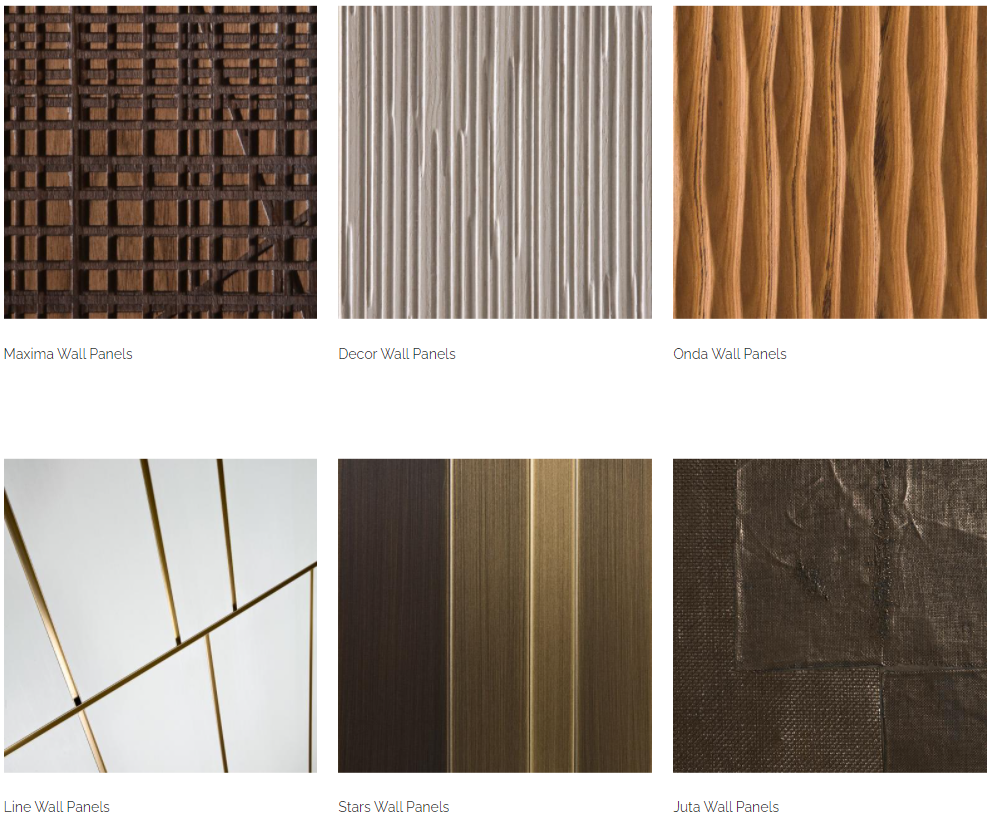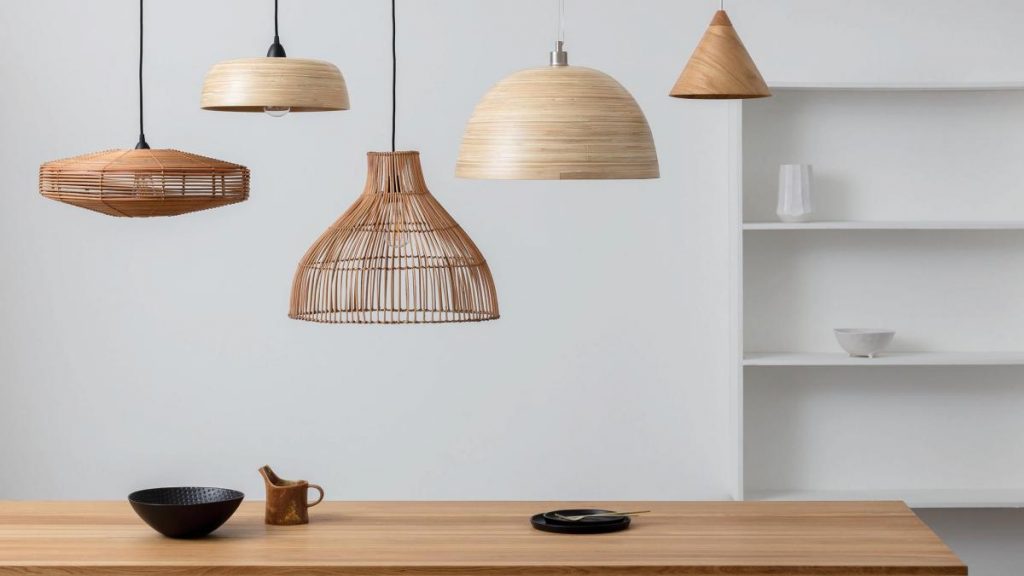Materials for Interior Design
Some designers look at a blank canvas and feel full of inspiration. Their brain immediately starts to populate with tons of creative ideas, and they begin pulling together materials, samples, design trends, and different colors to help bring their ideas to life.
However, it’s also natural (especially when you’re first starting out) to feel somewhat intimidated by all of the potential choices for new materials and finishes on interior design projects.
In this article, we’ll cover each aspect of material selection for interior design, including some of the most commonly used materials, how to pair different materials together, and 15 expert tips you can start using today!
Read also – How To Start An Interior Design Business?
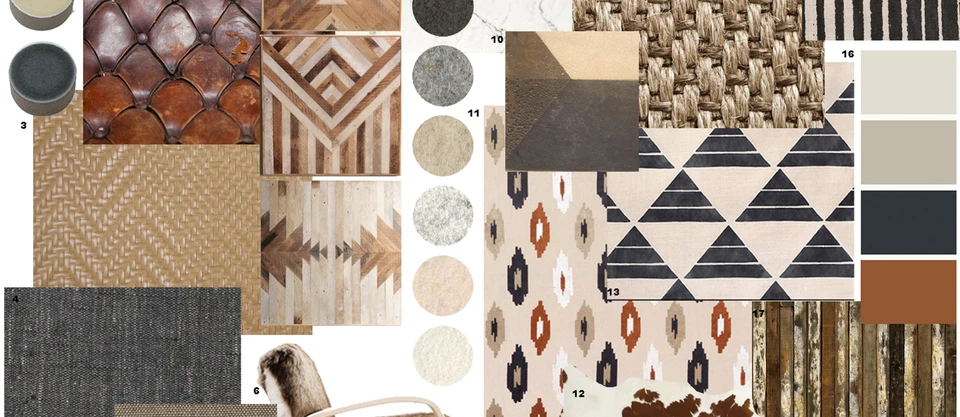
Image Credit: Knox Design
Importance of Material Choice in Interior Design
All good interior design processes start by answering questions about layout, flow, focal points, styles, and other conceptual elements. As the project progresses, though, designers eventually need to start making recommendations for very specific interior details and materials.
Often called “finishes,” these materials are the elements that will be used to accentuate the design, cover up structural components, and add any outstanding functionality still needed.
Decisions about materials and finishes will truly determine how the entire design comes together, and whether it meets the client’s needs and feels complete, coherent, and intentional.
Read also – 20 Common Interior Design Mistakes To Avoid
Image Credit: The Savvy Decorator
What Materials are Used in Interior Design?
What kinds of materials are most often used in interior design? Unless the material you’ve chosen will be part of the home’s structural integrity, almost nothing is off-limits. However, the list below is a good starting point for brainstorming ideas during your next project.
1. Granite
Most often used for countertops, granite is a naturally beautiful and incredibly durable material that makes a great surface for preparation. Granite also looks great with lots of different interior styles, and you can pick paint options that will accent the granite’s natural coloration. While polished granite is usually preferred for surfaces that are used to prepare food (or to go on top of vanities), unfinished granite can make a beautiful backsplash.
2. Wood
One of the most versatile construction materials, wood is used throughout the interior and exteriors of many homes. From floors to ceiling beams and decorative walls, wood can adapt to many different styles and it’s often pretty affordable when compared to other options.
3. Copper
Though it can be expensive, copper is truly experiencing a comeback. Copper can easily elevate a room, and it works well across many home styles. It’s not always practical to use real copper, however, so you might end up opting for copper-colored materials. As with many materials, less is more when you’re using copper. A small pop of color from an oven hood vent or drawer handles might achieve the look you want without too much effort.
4. Fabrics
Fabrics like silk, cotton, suede, wool, and others can add a nice finishing touch to a room and bring together the full design in a welcoming, comfortable way.
5. Renewable materials
Hemp, bamboo, and other materials that can be sustainably harvested might add a touch of personality while meeting your client’s desire to reduce their environmental impact. Other eco-friendly and natural materials that are growing in popularity include cork, concrete, recycled glass, and reclaimed wood.
6. Tile
Often used in kitchens, bathrooms, and other multi-purpose rooms, ceramic tile is preferred for its clean look, easy-care, versatility, and ability to match many different styles.
7. Synthetic materials
Synthetic materials like vinyl and laminate are typically used when the budget is a concern. This choice of material is more affordable and gives the appearance of tile, wood, or other natural components when used as a wall covering or as a flooring material.
Read also – Installation Day Tips for Interior Designers
15 Best Tips To Choosing Materials and Finishes for Interior Design:
Once you’re ready to start making real suggestions and picking materials, where should you actually start? How do you know you’re making industry-vetted recommendations to your clients? We’ve compiled a list of the 15 best tips for choosing materials to help you narrow down the options and thoughtfully suggest fitting options for your next interior design project.
We’ve highlighted the importance of each tip with a real-life example of this principle in action.
1. Understand your client’s requirements
Understand your client’s style, tastes, and preferences. It’s a great idea to have your client provide examples of rooms or homes that they feel best exemplifies their personal style. The more information they can share, the better chance you have of picking materials that they’ll love.
Depending on the type of contract you have with a client, you could also spend time with them at a specialty provider or home improvement store going through materials and having them pick out ones they’d like to incorporate.
Read also – Client Presentation for Interior Designers
Image Credit: pinterest.com
2. Determination
Determine how the room should feel. Yes, feelings are subjective. There are, however, proven ways to influence the emotional impact that a room has on inhabitants. Incorporating darker colors and harder materials might give a sense of luxury and even quiet, which is why these are often chosen for private spaces in a home.
Bright colors and warm materials are much more inviting and conversational, making them preferred for common areas like a kitchen and shared spaces like the living room.
Read also – 14 Best Living Room Interior Design Ideas
Image Credit: Image Luxe
3. Be consistent
Be consistent throughout the home, and tie together concepts in thoughtful ways. Unless your client has fairly unusual tastes, they will want a theme to be present in the colors and materials used for each room.
Image Credit: Globus Design Associates
4. Materials for exteriors
For exteriors, ensure that the materials you choose are appropriate for the environment, style of home, and neighborhood. There are fairly set conventions that you should follow to help your clients preserve and grow the value of their home, and maximize their personal enjoyment of the property.
Read also – How To Design a Home?
Image Credit: thespruce.com
5. Match your material selection
Match your material selection to a room’s function. For example, hard surfaces might make the room easier to clean, but they will also have a significant acoustic effect. Does your client want conversations or clinking dishes to be heard around their home? Probably not – and there are plenty of ways to mitigate excessive noise through proper space planning.
Lastly, when considering the materials to use for a home renovation, make sure that you account for who will be living in the home. Is your client a family that has young kids? Think about how this will affect choices regarding noise dampening materials, and whether you’re making selections that are durable and easily cleaned.
Imager Credit: Trendir
6. Budget
Don’t forget about the budget. Custom materials like stone, woodwork and metals will cost significantly more than stock versions. If budget is an issue, use small details and accents as a place for more lavish or unique materials and finishes. This can help save money and draw more attention to special, personal touches.
Image Credit: Home Plan Marketplace
7. Reclaimed materials
Can you incorporate reclaimed materials from a piece of the property, a furniture item, or some other element that has sentimental value for your client?
Image Credit: thomasdambo.com
8. Pair materials with colors
Pair materials with colors in a sensible, complementary way. There’s no hard and fast rule about whether it’s best to choose colors or materials first (though designers maintain strong opinions on this point).
At the end of the day, your decisions to choose colors or materials first will likely depend on the opinions and input of your client. If they are deadset on using a specific material, and this decision clearly has priority over the color, then this should be your starting point.
Read also – Color Theory in Interior Design
Image Credit: homelane.com
9. Materials types
Remember that materials can be both structural and decorative. Some materials might be used to cover wall studs (e.g., facing materials) or overly textured ceilings, while others are purely decorative. Knowing how certain materials will be used is crucial for giving your client the right guidance, ensuring that the home is safe, and passing an inspection – if necessary.
Image Credit: laurameroni.com
10. Prioritize the materials
Understand if specific materials will take a long time to source, or if they will be difficult to find. Having all of the relevant information will make it easier for your client to decide what’s best for them. Make sure you prioritize the material choices that will potentially hold up an entire renovation project.
Read also – Interior Design Sourcing and Procurement
Image Credit: reenasotropa.ca
11. Vary your material selection
Vary your material selection. Use a combination of soft and hard materials, and incorporate multiple textures. Aim for moderation in your variation, though. Busy designs can be distracting and off-putting, while over-using one specific material can be remarkably unattractive.
Image Credit: laurameroni.com
12. Don't mix multiple type of materials
Don’t mix too many different kinds of the same material. Wait, is that a contradiction? No! One of the most common interior design mistakes is combining multiple types of materials and misunderstanding how to properly layer.
You should pay close attention to the natural shape and texture of the materials that are being considered. Which way does the wood grain go? Will opposing grains, textures, or finished end up clashing when brought together?
Image Credit: pinterest.com
13. Natual lighting
Look at the natural lighting available within a specific room or throughout the entire house. Natural light can significantly change the way that certain materials (e.g., wood) look throughout the day. This could affect the final decisions regarding material choice, paint colors, window treatments, and more.
Read also – Best Kitchen Lighting Ideas
Image Credit: Sara Mortazavi
14. Material elements
Clearly establish which elements of a room or home are staying, and whether they will remain in place, or if they will be moved somewhere else (or changed in any way). If your client wants to center the design of a room around a nice focal point like a fireplace or bay window, then this decision will guide recommendations about which materials to use.
Image Credit: hamstech.com
15. Sustainability
Sustainability continues to be a growing trend and one of the top reasons that consumers one material over another. You’ll need to understand if your client has strong preferences about using sustainable materials, and how they could impact the design, project timeline, and overall cost.
Read also – 9 Best Sustainable Architecture Design Ideas
Image Credit: thetimes.co.uk
How to Pair Materials for Cohesive Interior Design
Interior design is equal parts art and science. While radical or unique designs often make magazine covers, there are some tried and true methods of pairing certain materials that are proven to create compelling and unified designs that are functional and aesthetically pleasing. Here’s a quick cheat sheet to get you pointed in the right direction if you want to double-check your instinct, or get some inspiration:
- Pay close attention to things like wood grain and color if you plan to use multiple types of wood, or if wood will be used for multiple purposes (e.g., walls, floors, ceilings, etc.).
- Use a variety of colors and textures, but don’t use too many or you’ll lose a sense of purposeful cohesiveness.
- If you’re using patterns that are different sizes and shapes, try to use similar or complementary colors unless you have a keenly trained eye for “mismatched” style.
- Test, test, test! Get as many samples, swatches, and demo elements as you can and use them all around the house to see exactly how they all work together.
Read also – 15 Best Interior Design Software
Learn More About Interior Design Best Practices
Are you looking for further resources, training, and community support to grow your career as an interior designer? The Foyr community is a premier online group of interior designers from all backgrounds and experience levels. Join the community today to find and access free training materials, discover new work opportunities, share your portfolio, and socially network with a growing group of interior designers.
Training materials available in the community include classes on pricing strategies, systems for scaling your business, interior design principles, and much more. These classes are created and taught by experienced professionals with proven results.
Unlike other online professional networking sites (e.g., LinkedIn), Foyr Neo is built specifically for interior designers, meaning that you get the support, training, and opportunities needed to take your side hustle or full-time career to the next level.
Conclusion
Mastering material selection for interior design takes time, patience, and practice. By starting with the fundamentals and keeping things simple you can avoid making mistakes and better align your recommendations to a client’s needs. Or, in cases where your client is unsure of what they want, you’ll be able to make educated recommendations that show your skill, natural creativity, and eye for detail.

Nichole Samuel
Interior Designer
Blog Reviewed By












